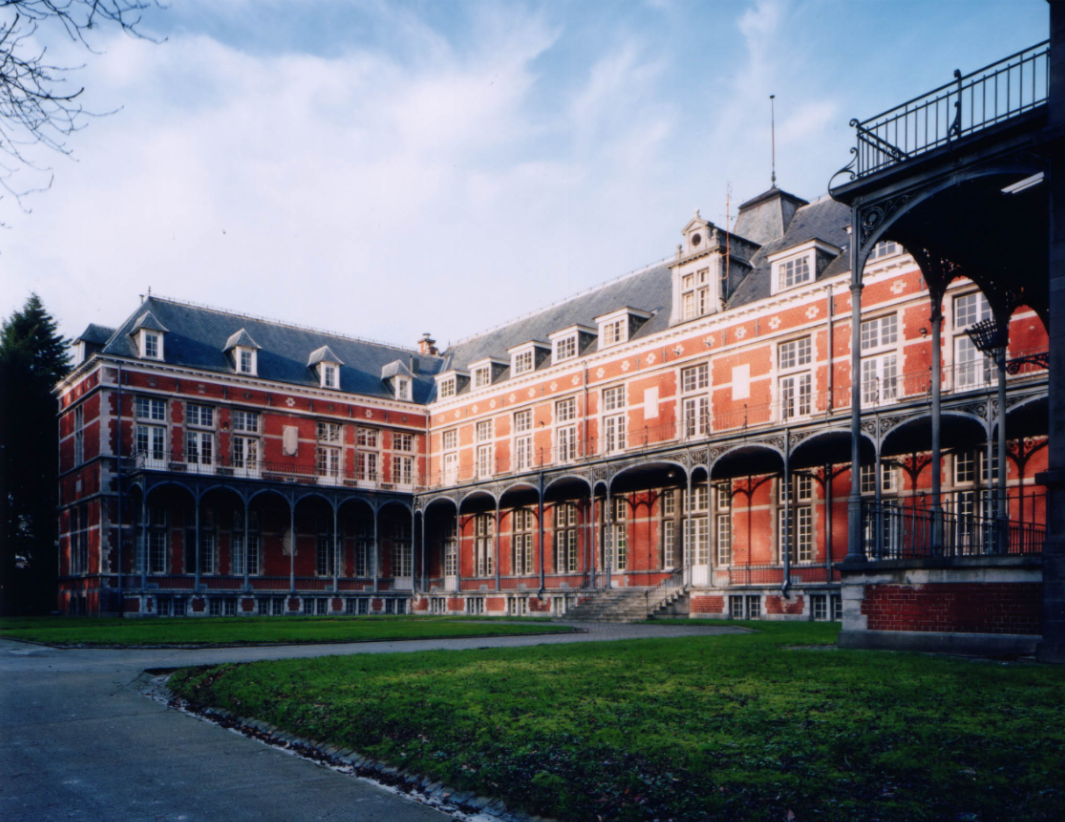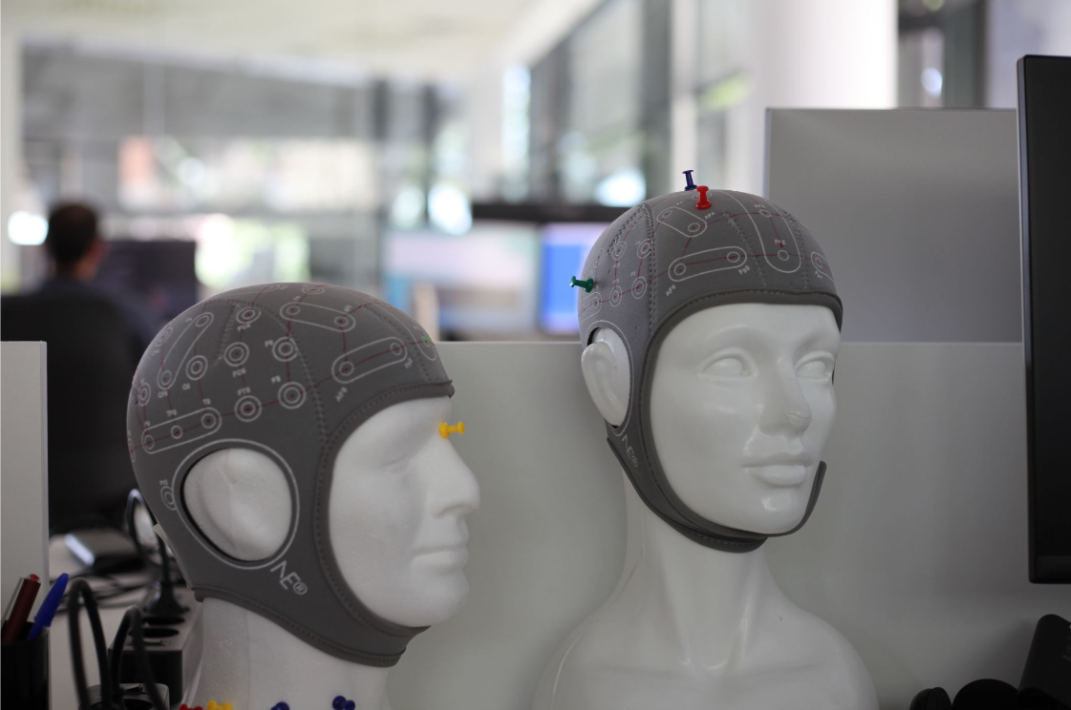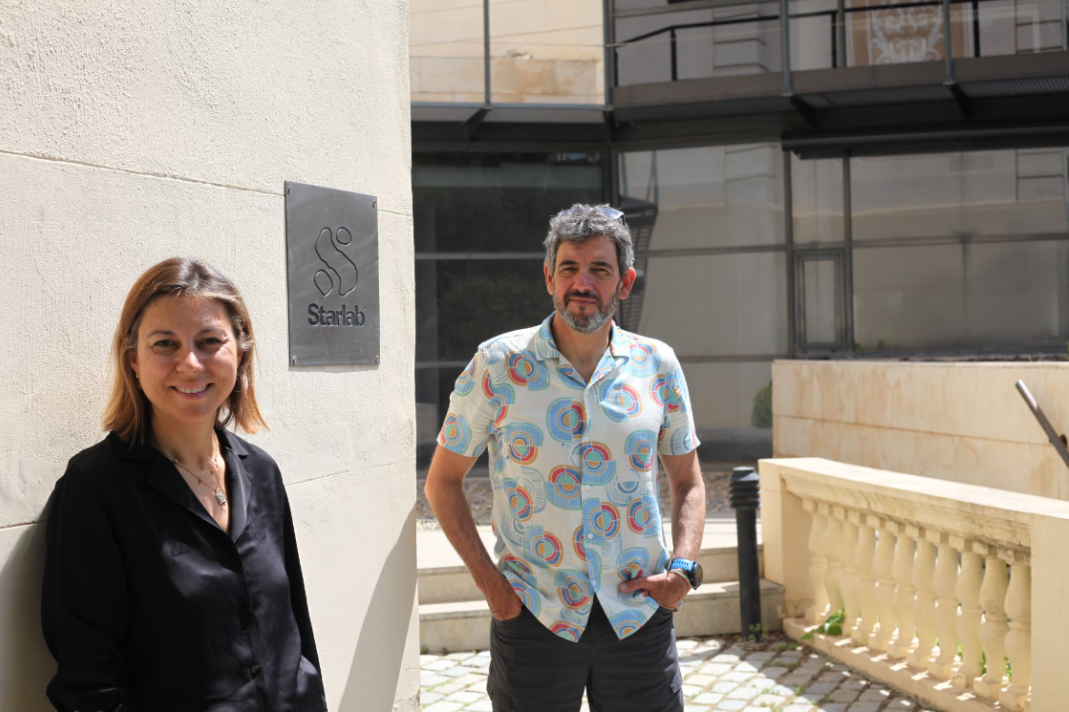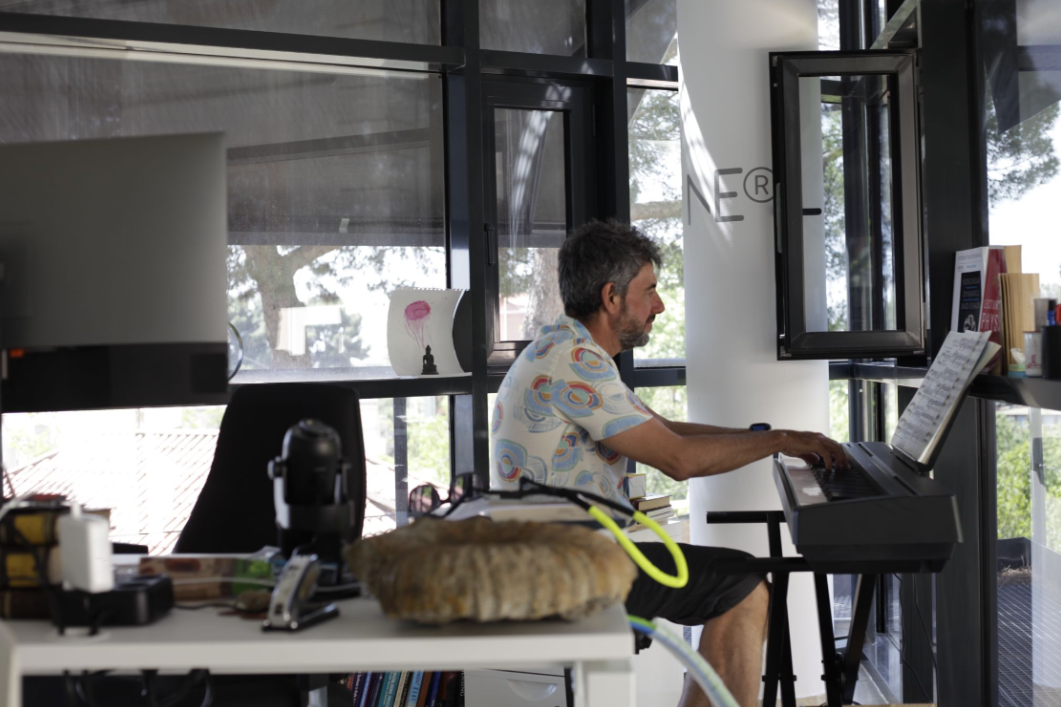 |
| “ a place where 100 years means nothing … ” |
What happens when you round up more than one hundred of some of the world's greatest scientists, maverick geniuses working on some of the world’s most groundbreaking ideas, put them together in a Belgian castle, and let their imaginations run wild?
Fire extinguisher duels, bootleg vodka made with lab-procured ethanol and worldbeating treatments for epilepsy are just some of what went down at Starlab: a one-of-a-kind experiment created to unite some of the world’s most daring technologists.
When it was founded in 1996, Starlab was compared to other top research institutes — like Xerox’s Palo Alto Research Center — that successfully bridged the gap between idea and market. It was also a prototype for the ambitious organizations of today like Google’s “moonshot factory,” X, trying to bring entirely new ideas to the world.
But the centre’s idealism was to be its downfall; its pie-in-the-sky approach couldn’t pay the bills, and it went dramatically bankrupt during the dotcom crash. But what most people don’t know is that Starlab’s legacy lives on in the picturesque hills overlooking Barcelona and elsewhere.
Many European VCs and universities claim they’re backing innovations that will solve humanity’s problems, but huge successes have been elusive. One of the companies from Starlab’s second generation has found significant success, but the centre's tale forces anyone interested in innovation to ask themselves: how do we really bring the wildest ideas to life — and make them financially viable?
The Noah’s Ark of science

|
Christopher Altman
|
Starlab was established by serial entrepreneur Walter De Brouwer together with MIT Media Lab founder Nicholas Negroponte and European VC pioneer Johan Konings. The idea was to create a utopian “Noah’s Ark” of science, where the brightest minds from different fields would be brought together to work on “deep future” research.
“De Brouwer’s ambition was to bring the best scientists in the world together to ‘think thoughts for the very first time.’ It was very interdisciplinary — no walls, no boundaries, no borders …” says Christopher Altman — astronaut, quantum physicist and Starlab veteran.
In its heyday, Starlab was home to more than 130 scientists from 36 countries, who worked on ideas ranging from time travel and consciousness to new media and “intelligent” clothing. The majority lived on site: a neoclassical castle designed in the late 1800s on the outskirts of Brussels.
 |
Starlab “Time Travel Party,” May 2001. (L to R): Hugo de Garis,
Serguei Krasnikov, Roman Zapatrin, Christopher Altman
|
“It was like a pirate ship in a way, which is what I think I fell in love with. Or you could call it a kind of sect,” laughs Giulio Rufini, neuroscientist and current CEO at Starlab. “We’d stay up all night talking in-depth theoretical implications of closed timelike curves (time travel). Roman had a centuries-old recipe for homemade vodka and put to use some surplus ethanol he reappropriated from the biophysics lab down in the basement,” says Altman, referring to one of his colleagues, a quantum topologist and mathematician. “One time a few of the researchers covered themselves in yards of aluminium foil as “armor” and started a duel, complete with fire extinguishers as weapons, in the courtyard.”
Running aground in the dotcom VC drought
But how did Starlab plan to commercialize these wild ideas? Starlab’s research was loosely divided across four main areas: Bits, Atoms, Neurons and Genes.
The acronym (BANG) was later adopted by MIT Media Lab. “They borrowed that from Starlab a few years after the fact,” recalled Altman. Alongside the team of swashbuckling scientists working across these disciplines, Starlab also employed a commercial team who were tasked with trying to monetize the research.
One of them was Ana Maiques, who’d recently married Rufini before they decided to both join the project. “At the time they were developing “iWear,” intelligent clothing with integrated sensors.We'd reach out to Levi's and all these companies and say, ‘Put €100k on the table per year, and you have access to the IP that is being generated.’”
“In some cases it was successful, but it was hard to replicate in others.”
And while the lab was always run as a private entity, intended to be distinct from academia, commercial deals like these weren’t enough to sustain it. Maiques remembers how Starlab reflected the heady optimism that was common in the early days of the internet age, as VC capital was pumped into the institute with no urgency on getting a return on investment.
“They would say ‘100 years means nothing at Starlab’. Well, for 100 years to mean nothing you need to be full of capital to develop those technologies,” she says. “The problem was that the dotcom bubble crash happened, and they couldn’t secure the next round. It happened overnight … one day we were eating lobster, and the next they came to close the company.”
Altman says that when one key Swiss investor pulled their backing out of Starlab, the team began approaching people like Bill Gates — Altman himself even went to George W. Bush in person, approaching him at his hotel on his first visit to NATO in an effort to save the lab. Enthusiasm was abundant, but government grant timing was prohibitive, so all the effort was for naught. “It was kind of a bummer, having set up all this stuff,” Rufini says wryly.
Rebirth in Barcelona
But Maiques, the more entrepreneurially minded of the recently married couple, wasn’t about to give up on Starlab. “Ana’s always had more of a business head than me, and she said, ‘Let’s just buy this and run it ourselves,’” says Rufini.
Rufini and Maiques had already been working on setting up a Spanish chapter of Starlab, and had recruited 15 scientists to begin work at the Fabra Observatory, perched in the hills overlooking Barcelona. The team had already secured research contracts with the European Space Agency but, in absence of funding from the central operation, had to dramatically scale back ambitions.
 “We had to take radical action, we had to lose about half of the people unfortunately,” says Rufini. “It was the crossing of the desert and it was dealing with a different type of Starlab reality.” This new reality also meant radically narrowing the scope of research. 130 scientists working across BANG were reduced to six scientists working on two core areas: space and neuroscience.
“We had to take radical action, we had to lose about half of the people unfortunately,” says Rufini. “It was the crossing of the desert and it was dealing with a different type of Starlab reality.” This new reality also meant radically narrowing the scope of research. 130 scientists working across BANG were reduced to six scientists working on two core areas: space and neuroscience.
It was here that Starlab began building the foundations of what would become Neuroelectrics, a non-invasive neural interface startup that raised $17.5m in 2021 to fund a Phase III trial for epilepsy treatment.
The company’s Starstim headcap reads electrical brainwave data from the wearer, and can electrically stimulate areas of the brain to target treatments for conditions like Alzheimer's and epilepsy. Apart from relying on grant funding, Maiques describes how she would go door-to-door at research companies, selling early iterations of the Starstim headcap, as well as data processing services.
“We needed to run payroll. That's why I was going out and knocking on doors and trying to sell to companies out there, which is something that the research field never does — that kind of commercial action,” she says.
'You’ve got to let the broth boil'
Neuroelectrics was able to self-sustain for 10 years with this bootstrapping strategy, and the company now helps finance Starlab’s research.
But some of the spinout attempts haven’t been such a hit. Another commercial product Starlab launched is a satellite observation company called Greendex, which analyses the amount of vegetation surrounding real estate to assess air quality in different neighborhoods.
“It hasn't been as successful as Neuroelectrics. The market doesn’t seem ready,” says Maiques.
“Spinouts are not easy. You need to have the technology, but the timing also has to align with the market.”Maiques says that, today, the space and satellite observation side of Starlab’s research has taken a back seat, with more energy going into neuroscience.
Rufini and his team are now working on a project called “neuro twins” — which aims to use various data sources like MRI and EEG scans to build a digital model of people’s brains to identify how and why things might be going wrong across different pathologies.
“Neuro twins is still 10 to 20 years away, so we still have the long-term science vision with the short-term focus on return on investment. We never abandoned shooting for the moon in deeptech areas and we're still finding grants to sustain that,” says Maiques. “It’s like a broth. You have to give it time to boil.”
Making science useful
While Neuroelectrics is the commercial poster child for the current iteration of Starlab, the institute’s 25-year history has contributed to countless areas of innovation.
The “iWear” smart clothing project was eventually sold to Phillips, while another biotech company, Bioprocessors, was spun out and relocated to Silicon Valley. Rufini adds that a whole host of ideas that are now commonplace were born at Starlab. “I came up with the idea that, pretty soon, cars will have the internet and we could use that information to forecast traffic,” he says.
“There was another one called ‘spitters.com’, where you could send off spit samples to your genotype. There was another one called ‘pajamanation.com’, which was a marketplace for jobs for people working from home.”
Deep Future
Some argue that Starlab’s greatest legacy isn’t in the scientific advances or spinoff businesses that it created, but in the way it encouraged those who walked through its doors to think in a truly unique way.
Christopher Altman went on to work at quantum research projects for NASA and with the US government, and later launched renewable energy cryptocurrency SolarCoin with fellow Starlab alum Nick Gogerty. Today he’s still not afraid to attach his name to such “Deep Future” speculative science, and is a cofounder of a nonprofit scientific research organiation studying the phenomenon of UAPs.
“There are paradigm shifting technologies to be discovered if we can get to the bottom of the phenomenon,” he says. “Confirmation of extraterrestrial artifacts would quite readily qualify as the single greatest discovery made by the human race.”
Maiques adds that no less than eight former researchers at Starlab Barcelona have gone on to start their own companies, in fields ranging from virtual reality to earth observation radar. This entrepreneurial spirit, she believes, is something that’s baked into Starlab’s business model, and something that she says is sorely lacking in European academia.
“In Europe we are good at turning money into knowledge, but we're really bad at turning knowledge back into money,” she says. “I honestly cannot think of a private company doing science in such a way with this model to create spinoffs. We always had the drive to go to the market and make money. It's just a different vibe.”
Starlab’s director of neuroscience, Aureli Soria-Frisch, agrees that European science all too often gets stuck in the lab. “There is a lot of very interesting science in Europe. But how can we make this useful for people? We need better licensing policies and career development support outside of academia,” he says.
In that sense, Starlab’s story serves as a microcosm for this big question in European tech: how can we make the most of the continent’s scientific innovation? The project’s first chapter serves as a warning for what can happen when venture capital flows into ideas without a viable business model. Its second chapter is a lesson in how great research can be done with the market in mind, given the right conditions. Europe, so far, just hasn’t excelled in creating those conditions.

 ASTRONAUTICS・BREAKTHROUGH PHYSICS
ASTRONAUTICS・BREAKTHROUGH PHYSICS






























.jpg)



